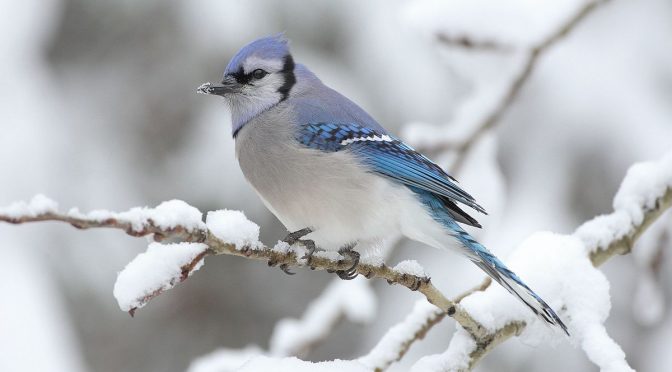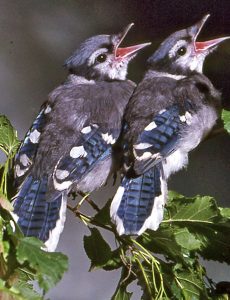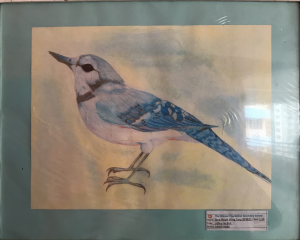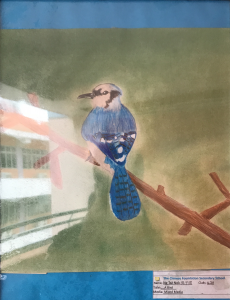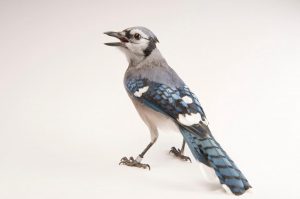| Common Name | (in English) Blue Jay |
| (in Chinese) 冠藍鴉、藍松鴉、藍樫鳥 | |
| Scientific Name | (in Latin) Cyanocitta cristata |
| Peculiar characteristics / external features: | The blue jay is between 9 and 12 inches in length. It is bright blue on top and white to gray on its throat, chest and belly. It has a gray-blue crest on its head and black and white bars on its wings and tail. Its bill, legs and feet are black. It also has a black “necklace” on its lower throat. |
| Distributions: | The blue jay can be found in southern Canada and in the United States, east of the Rocky Mountains. The blue jay is migratory and northern populations will move south in the winter. The blue jay is common in deciduous forests. It is also found in residential areas. |
| Habits: | |
| l Dietary | The blue jay is omnivorous. It eats fruits, acorns, seeds, nuts, insects, mice and frogs. Sometimes a blue jay will raid a nest for eggs and young birds. When a blue jay eats nuts, it holds the nut with its feet and cracks it open with its bill. The blue jay is a seed spreader. It often buries food to eat later. Some seeds and nuts are never recovered and grow into trees and other plants! |
| l Reproductive (Solitary/Social/Territorial, Courtship Behavior, Taking care of youngs, etc) | Blue jays are monogamous birds and pair bonds may last through several nesting seasons. A mated pair will work together to build a cup-shaped nest using sticks and twigs, bark, moss, grass and even artificial materials such as paper, string or yard. The nest is positioned in a tree crotch or branch fork usually 5-20 feet above the ground, though higher nests have been recorded.
Both male and female birds incubate the brood of 3-7 pale green-blue, darkly spotted eggs for 16-18 days. Both parents also feed and care for the nestlings for 18-20 days until the young birds are ready to leave the nest. Bird pairs may raise 1-3 broods per season depending on available food and regional climate. Even after they’ve left the nest, younger blue jays may stay in the same area as their parents until the next breeding season, when they will seek out their own mates and territories. |
| l Whatever appropriate | |
| Interesting Fact: | The blue jay is very aggressive and territorial. Groups of blue jays often attack intruders and predators. They often drive other birds away from bird feeders. The blue jay is also very vocal. It makes a number of different calls including its distinctive “jay- jay.” It also growls, whistles and chatters. |
References:
- https://www.nationalgeographic.com/animals/birds/b/blue-jay/
- http://www.audubon.org/field-guide/bird/blue-jay
Voice of Blue jay:
https://www.allaboutbirds.org/guide/Blue_Jay/sounds
Video:
